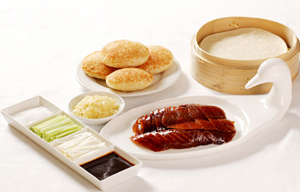Rice of ages
Updated: 2013-01-30 10:11
By Jin Zhu (China Daily)
|
||||||||
Experts believe agricultural species resources are at risk in the face of the world's common threats, such as environmental pollution, climate anomalies and the invasion of alien species.
The Food and Agriculture Organization of the United Nations says 25 percent of species loss in the past century occurred in China, as the population and the exploitation of resources soared.
"Worldwide modernized farming has helped to ensure global food safety, but meanwhile, it has accelerated a shrinking of agricultural biodiversity," says Dai Weidong, FAO's project director.
In 2002, FAO initiated the Globally Important Agricultural Heritage Systems program to rescue traditional farming practices that survive in millions of poor rural communities worldwide.
|
 |
The rice in Wannian county and its affiliated culture system was listed as an FAO global protection project in 2010.
Today, even in Wannian county, it is still rare to see the precious ancient rice outside the 20-hectare protected area. The cultivation area was more than 3,000 hectares as recently as 1950, according to local agricultural authorities.
"Lower output and huge labor input - because of traditional farming methods that the rice has - led more young people to abandon the self-sufficient lifestyles of their forefathers and go to work in cities," Zhan says.
The ancient rice produces 3 tons per hectare, compared to the average 9 tons per hectare for the ordinary rice varieties in one season, local figures show.
Local officials have raised the purchasing price for Wannian rice to three times the price of ordinary rice, to encourage farmers to keep planting it.
"But now I am still quite worried that no one will be willing to plant the ancient rice in the future. Then the rice variety is very likely to vanish," Zhan says.
Contact the writer at jinzhu@chinadaily.com.cn.

 'Taken 2' grabs movie box office crown
'Taken 2' grabs movie box office crown
 Rihanna's 'Diamonds' tops UK pop chart
Rihanna's 'Diamonds' tops UK pop chart
 Fans get look at vintage Rolling Stones
Fans get look at vintage Rolling Stones
 Celebrities attend Power of Women event
Celebrities attend Power of Women event
 Ang Lee breaks 'every rule' to make unlikely new Life of Pi film
Ang Lee breaks 'every rule' to make unlikely new Life of Pi film
 Rihanna almost thrown out of nightclub
Rihanna almost thrown out of nightclub
 'Dark Knight' wins weekend box office
'Dark Knight' wins weekend box office
 'Total Recall' stars gather in Beverly Hills
'Total Recall' stars gather in Beverly Hills
Most Viewed
Editor's Picks

|

|

|

|

|

|
Today's Top News
Boston bombing suspect reported cornered on boat
7.0-magnitude quake hits Sichuan
Cross-talk artist helps to spread the word
'Green' awareness levels drop in Beijing
Palace Museum spruces up
First couple on Time's list of most influential
H7N9 flu transmission studied
Trading channels 'need to broaden'
US Weekly

|

|







